by Nick Drew | Fri 03 Jan 2020
CASE Midi-Upgrade
CASE Construction Equipment’s range of Japanese built Sumitomo inspired excavators have certainly made a lot of friends in the UK market, gaining an enviable reputation for outstanding reliability, smoothness of operation and top levels of operator comfort ever since the first CX models started arriving.
The larger models from 13 tonne upwards have excelled themselves with some well-known industry figures declaring that you buy a CASE and there is “no toolbox required” a real vote of confidence in the machines overall reliability.
The same could be said for the range of CASE midi-excavators which once again come from the Sumitomo stable and have recently been upgraded to D Series status. The CX75C SR and CX80C MSR, which have always been very popular with groundworks contractors, gaining a solid reputation, have now been replaced by 3 new models consisting of the CX85D SR Fixed Boom, which tips the scales at 7930kgs, the 8490kg CX85D SR Offset Boom and the CX90D MSR which was displayed in public for the first time at Bauma earlier this year and replaces the previous CX80C model and has an operating weight with bucket of 8630kgs, some 120kgs heavier than the outgoing model.
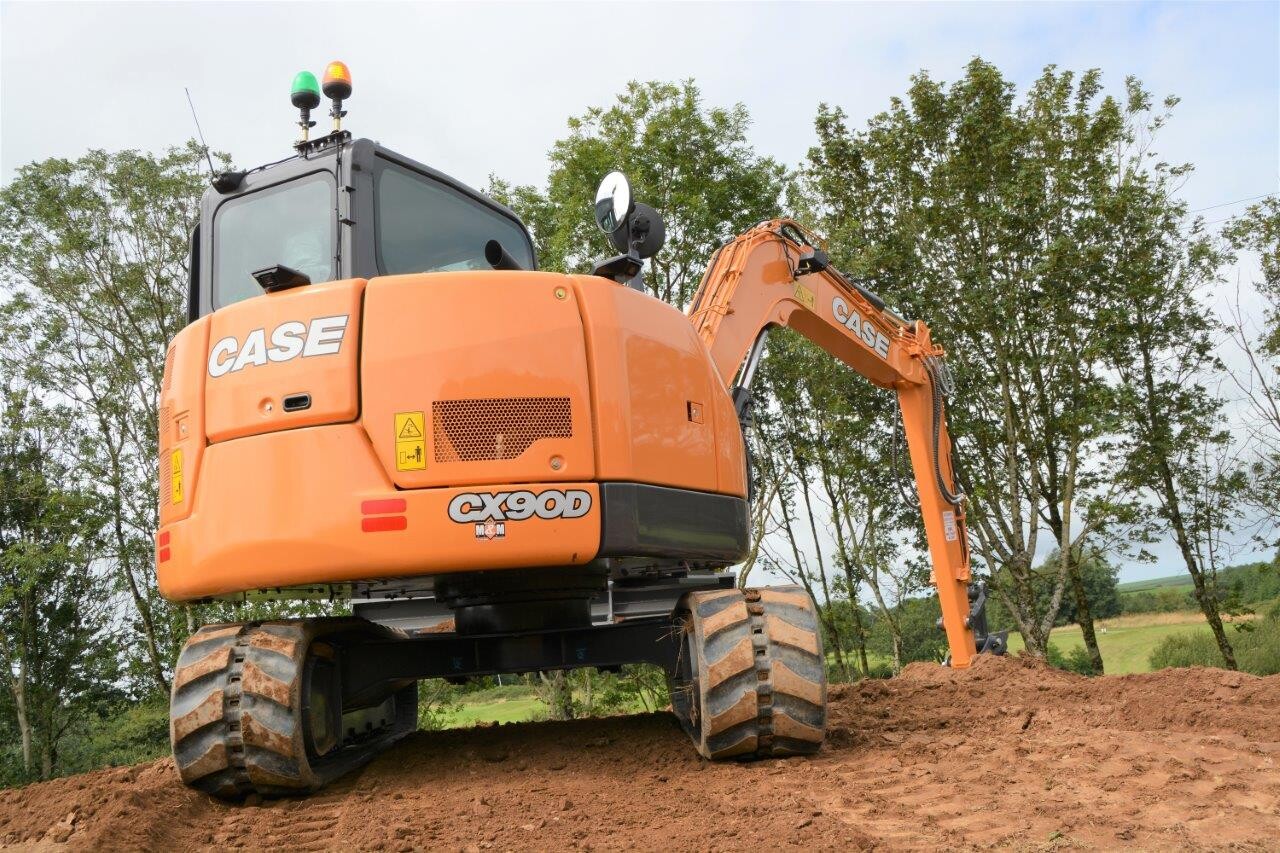
All three new machines are powered by the same 3.3 litre Yanmar Stage V engine which replaces the Isuzu unit fitted in the previous models. Power output for the new engine is 51.6kw (68hp) @2000rpm, a 10.4kw (12.8hp) increase in power compared to the previous Isuzu unit. According to CASE this engine offers 20% more power with up to 56% increased torque at lower rpms and an overall wider torque range. The engine uses an auto cleaning DPF after treatment system to achieve the emissions compliance, so no need for any AdBlue and as it all takes place automatically, no input from the operator.
Having seen the CX90D machine at the CASE Eagle Days event where it was used for the UK heat of the manufacturers popular Rodeo Competition, I was keen to get up close and personal with it, so when my local CASE dealers M & M Plant Devon & Cornwall Ltd held their open day event I popped along to their shiny brand new depot close to Launceston, Cornwall, a day before to try one out on their extensive demonstration plot.
Walkaround
The upper-structure bodywork is pretty much the same as on the previous models, to the rear of the cab a large panel door opens out to reveal the cooling packs, air filter, batteries and the battery isolation switch and a bracket for storage of the grease gun.
The engine bay panel raises upwards assisted by a gas strut, daily checks are easily done from ground level including coolant levels and engine oil. A quick peer inside revealed further evidence of the machine’s Japanese heritage with yet another high-quality Japanese component, the starter motor, made in this instance by Hitachi.
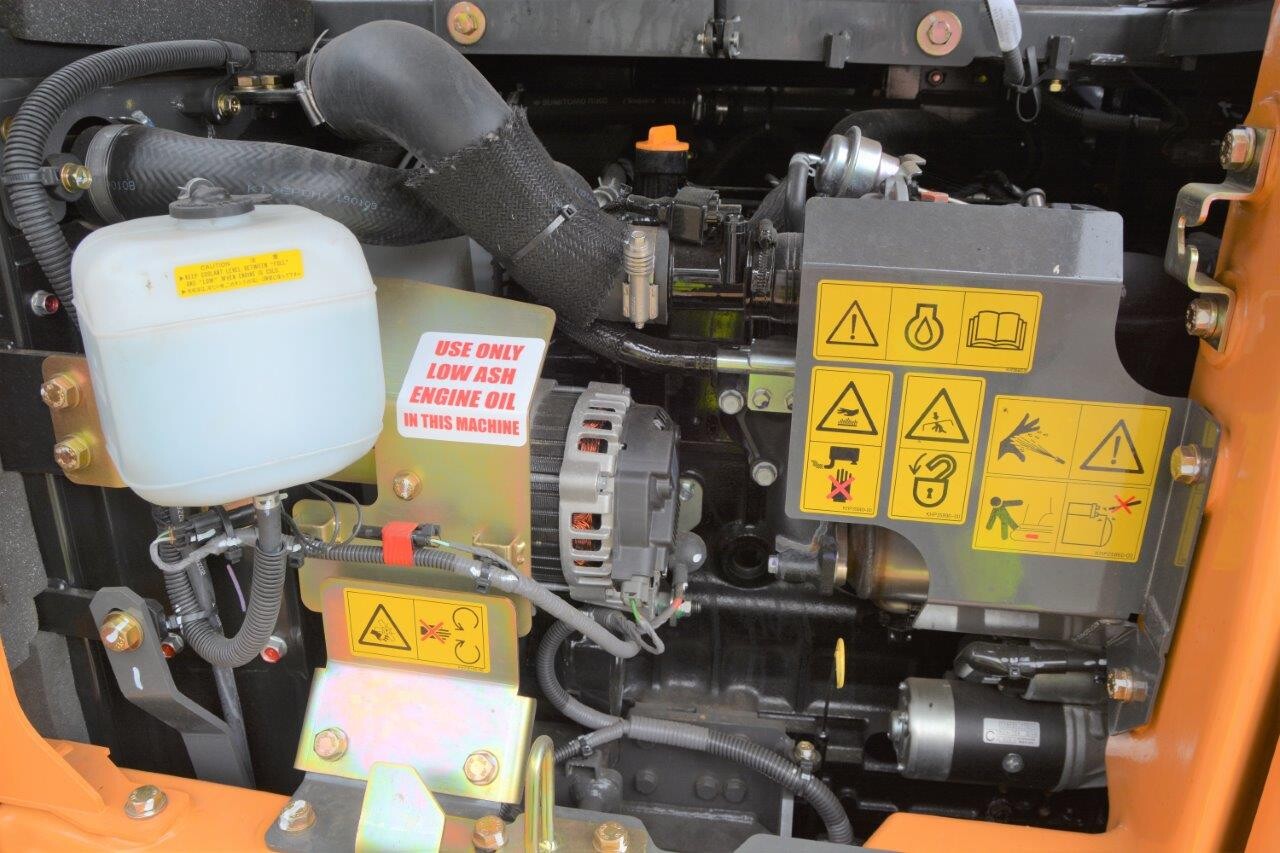
On the offside of the machine the large panel door reveals the main valve block, all the fluid filters, a screen wash bottle and the standard fit electric refuelling pump which stows neatly within the confines of the door, for rapid filling of the 120-litre fuel tank.
The off-set boom remains the same as on the previous model swinging 80o to the left and 45o to the right while large glazed areas in the cab ensure excellent visibility at all angles of the digging arc. All CX90D machines for the UK market will be fitted as standard with the longer 2.19m dipper arm which in turn gives the machine a maximum reach at ground level of 7560mm and a maximum dig depth of 4670mm.
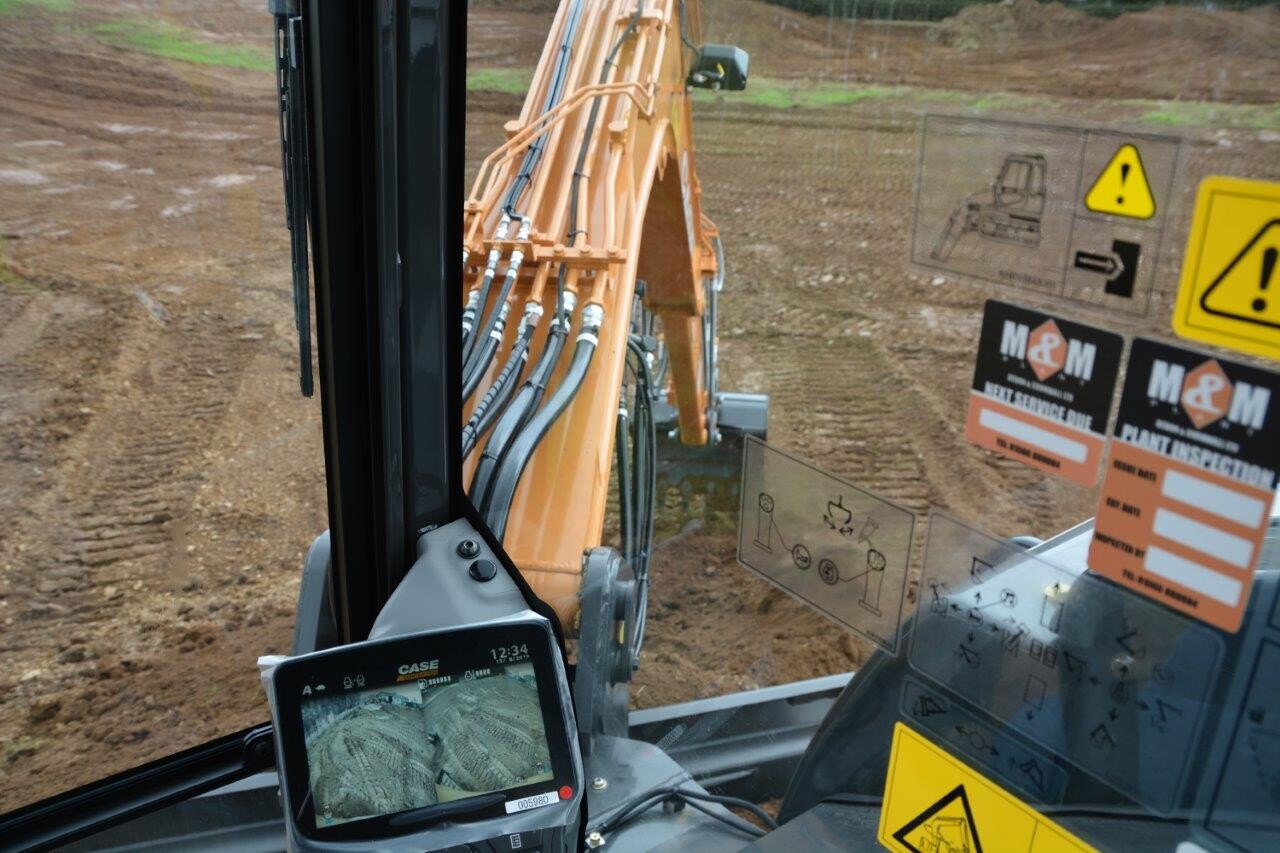
Standard fitting of tracks is 450mm rubbers, but there are options for 450mm rubber street pads or wider 600mm steel triple grouser pads, track length is 2845mm and there are five bottom rollers and one top roller fitted, overall track width is 2320mm. A nice deep curved dozer blade allows for good material roll during dozing duties while the dozer blade ram is well protected by a sturdy looking ram guard. Track motors are variable displacement axial piston type offering travel speed in low of 3.2 km/h while high speed is a lively 5.1 km/h.
According to CASE the machines now feature bigger hydraulics sourced from larger excavators in the range. Improved performance is offered thanks to what they describe as a better balance between the various components, (i.e. engine, pump) and the Pump Transition Reduction Control (PTC) which has proven to be so successful in CASE’s larger excavators. Arm and bucket digging forces remain the same as the old model at 39.5 kN and 56.9 kN respectively, while the machine is capable of lifting 1800kgs straight up at a 4m reach, an important statistic for those involved in lifting manhole rings and the like.

Climbing into the cab we are greeted with the familiar look that we have come to expect from these CASE excavators. Dark and grey plastic trim and smooth contours greet me as I step inside onto the one-piece rubber mat that is removable and easy to clean. This example was fitted with the standard manually adjusted suspension seat, which I must say I found extremely comfortable, but there are options for an air suspension version and also air suspension with tilt and heat functions.
Track levers are of the T-bar design and are attached to some pretty substantial foot pedals, there are foot rests on either side for comfort. The cab has a wide spacious feel to it with front foot space from glass to seat measuring 640mm, and overall front space from glass to seat back at 1115mm, but on the downside once again there is no room behind the seat to store the obligatory lunch bag, I had to hang my rucksack on the coat peg on the left hand side, but I wouldn’t like to trust it that long before it broke off under weight and constant movement during the working day!
A new 7” inch colour LCD monitor is fitted and is the same as that fitted in larger CASE excavators up to 50 tonne class, so if you have sat in the larger machines you will feel equally at home on these smaller models. The screen features much higher contrast and is intuitive and easy to read, it also includes 5 additional menus compared to previous versions. All the usual information is displayed very clearly, including fuel level, oil and coolant temperatures, work mode, fuel consumption and work tool flow rates that can be adjusted on screen as required and a whole host of other options are accessible via the monitor.
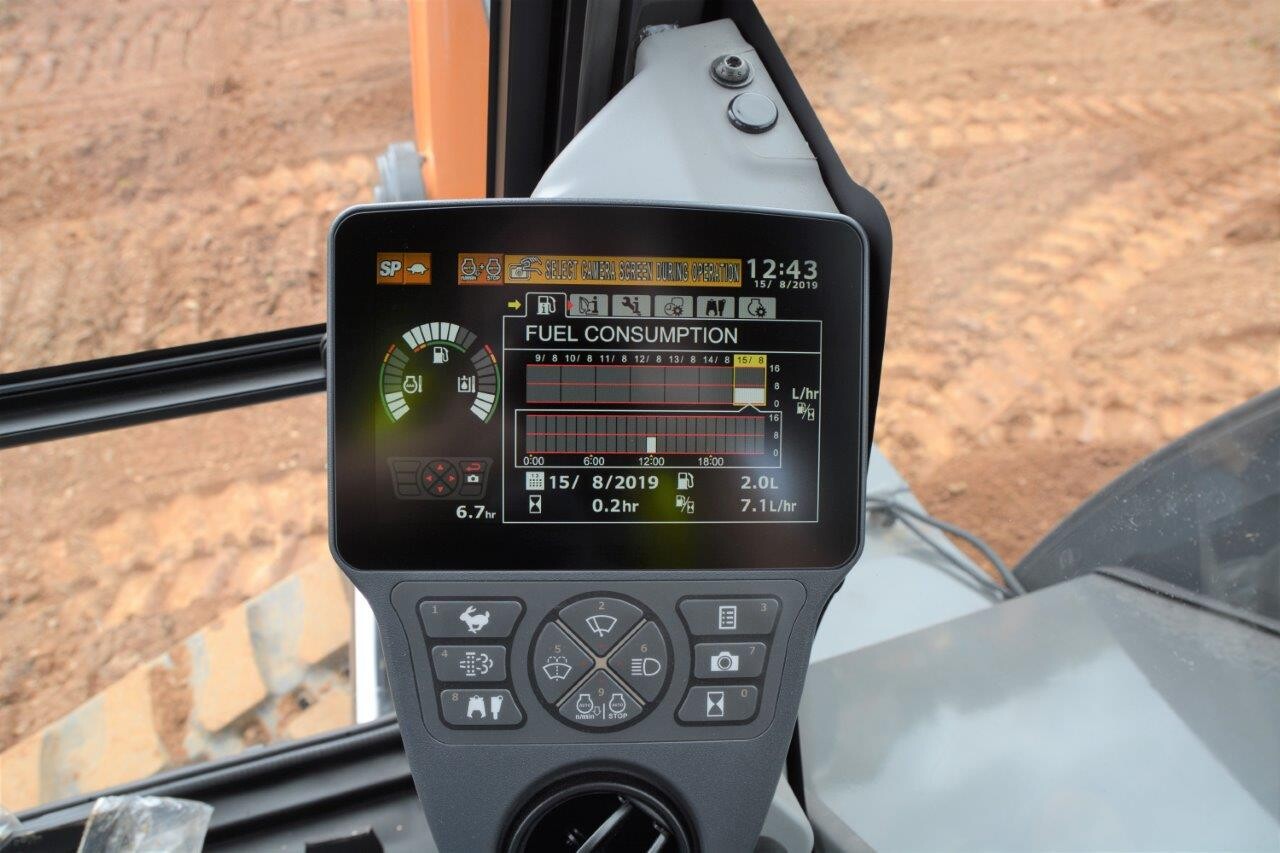
I found this monitor and the bank of 10 push button controls beneath it to be one of the easiest to use on the market, all very self-explanatory and straight forward. As is customary these days the monitor can become the rear view camera screen too at the touch of a button, not only the rear view but this machine is also fitted as standard with an additional side view camera with both views being displayed on the screen, there is also an option for CASE’s Maximum View Monitor which offers a birds eye style panoramic view of around 270o around the machine.
On the operators left hand console we find the “Denso” style air conditioning control pad, which I put to good use on a warm summer’s day in Cornwall, making full use of the six air vents that are provided around the cabin interior. On the opposite console its another simple and easy to use layout, with the radio, and two rocker switches for flashing beacon and overload warning alarm, with the ignition key to the fore and the all-important mode/throttle selection dial. Up above the console built into the side facia is a 12v plug socket, and four blank spaces for additional rocker switches one of which was taken up by the quick coupler switch and a cubby hole for storage of a mobile phone if needed.
The aforementioned mode dial has remained a constant feature on the CX range of excavators since their introduction around 2000 and anyone who has spent time on them will be familiar with this dial. Three modes are offered the standard default setting is A-Auto Mode which is best suited to grading, lifting and precision work, H-Heavy Mode is the middle setting offering productivity with fuel economy and SP-Speed Priority Mode for maximum speed, power and productivity.
In the Dig
By now I had looked at the machine enough, my appetite had been wettened and I was keen to put it into action. I turned the key and the 4 pot Yanmar engine sprang to life, not that you would notice though, as it is extremely quiet in the cab, officially only 69dB according to CASE and I certainly would not dispute that. Having allowed the machine to go through its auto warm up period, I then trundled away from the yard area and headed out to a topsoil heap to put it through its paces.
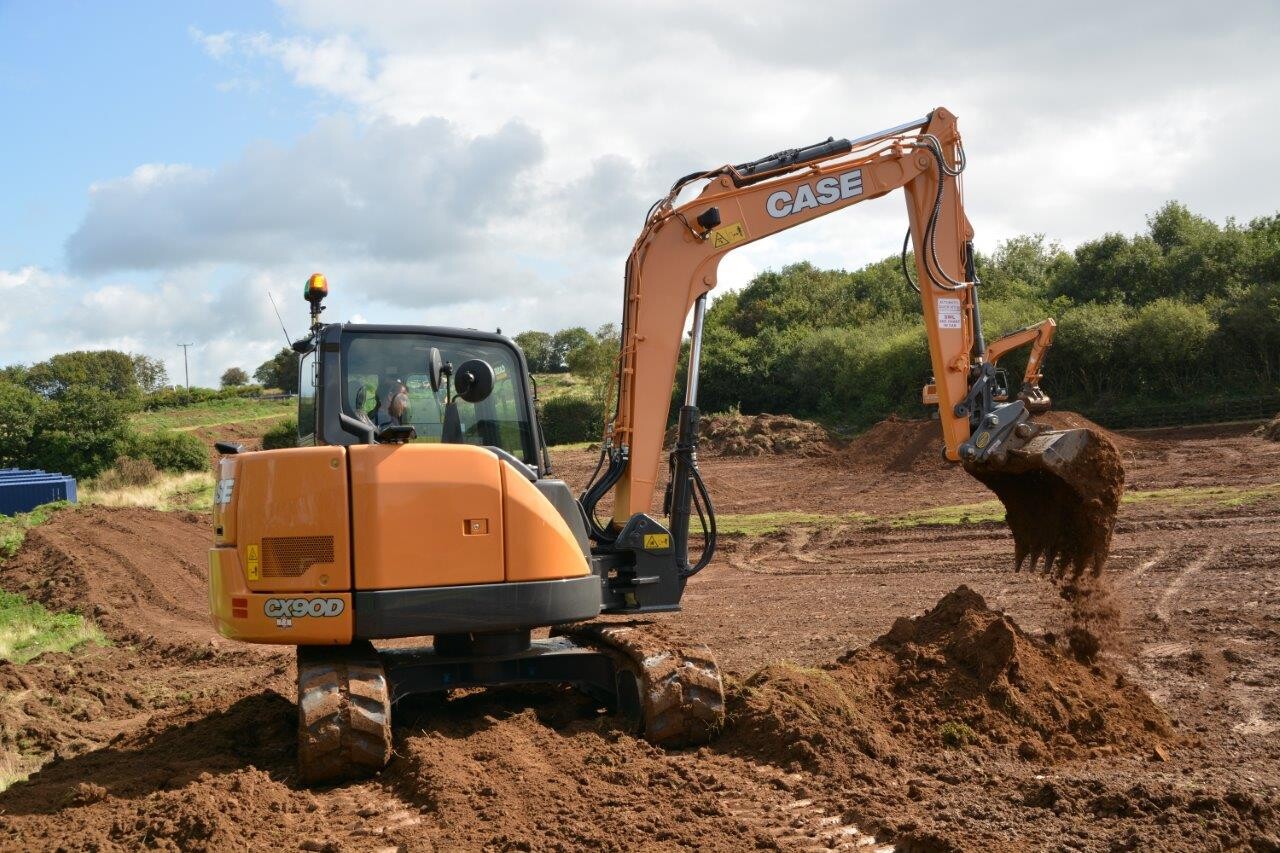
Having climbed up on top I popped the blade down using the control lever situated to the right of the right-hand side joystick and set the machine up to dig. I initially tried using the machine in its A-Mode setting according to CASE in this mode the machine uses -4.5% less fuel, but as usual for this old school operator, I felt it was lacking in both speed and power so it wasn’t long before I cranked the dial around to H-Mode, then by pressing in the button on the dial up to SP-Mode for the full speed and power option, this selection automatically brought the machine to life and it became a totally different and lively animal.
Grabbing a large 48” bulk digging bucketful of topsoil I reached out to try and unsettle the machine, but it stood its ground admirably in every possible position I put it in. The machine is quick on the slew at 10.4rpm, around the same as the previous CX80 model, but if I had to find a fault, I found the dipper arm a tad on the slow side both coming in and sending out, having said that, this was a brand new machine so that may improve as it loosens up, or maybe a tweak on the valves could speed it up slightly.
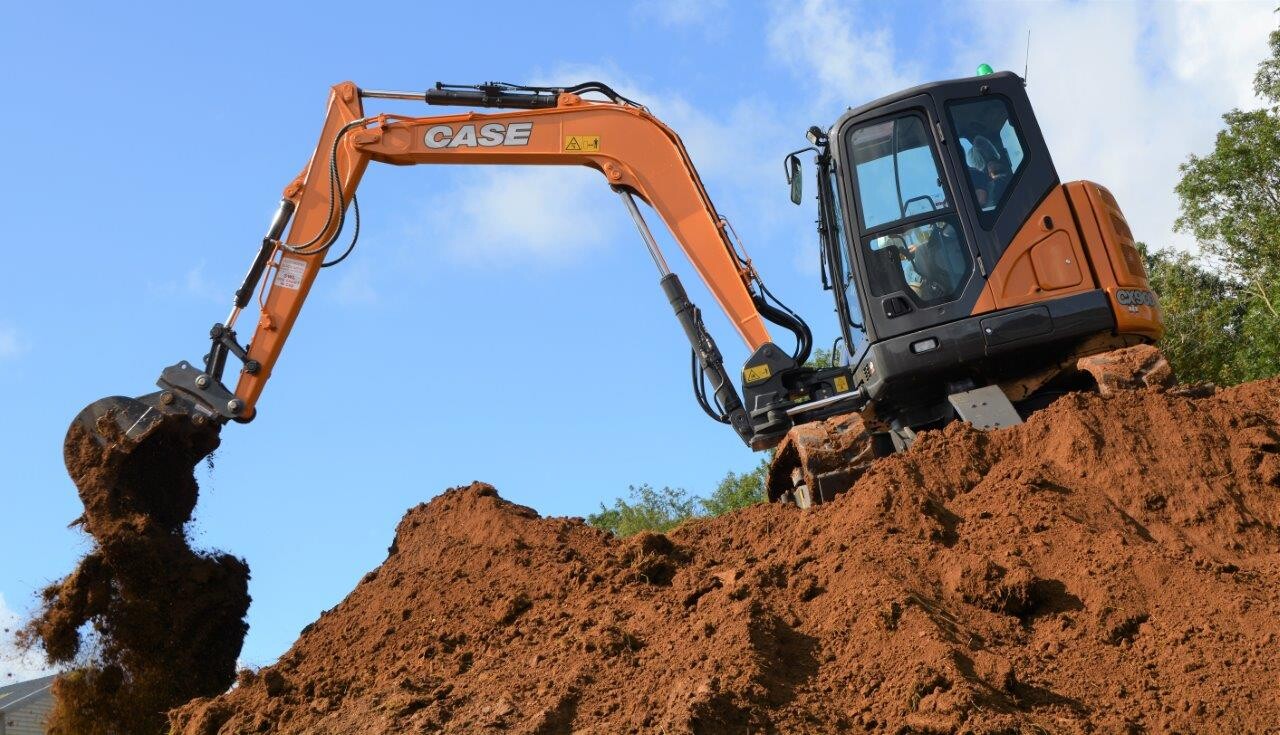
I felt the need for some fresh air so I opened up the cab door and I was delighted to see it folds back within the confines of the upper-structure which will protect it from any potential accidental damage.
I put the bucket on the ground in front of the blade to see if I could clean up in a “dust pan and brush” style, but I have to report that the bucket will not come in close enough on this offset boom model, although you can nearly do it by off-setting the boom to one side of the blade. I suspect this would not be a problem on the smaller fixed boom CX85 SR, but it’s a compromise on the CX90D.
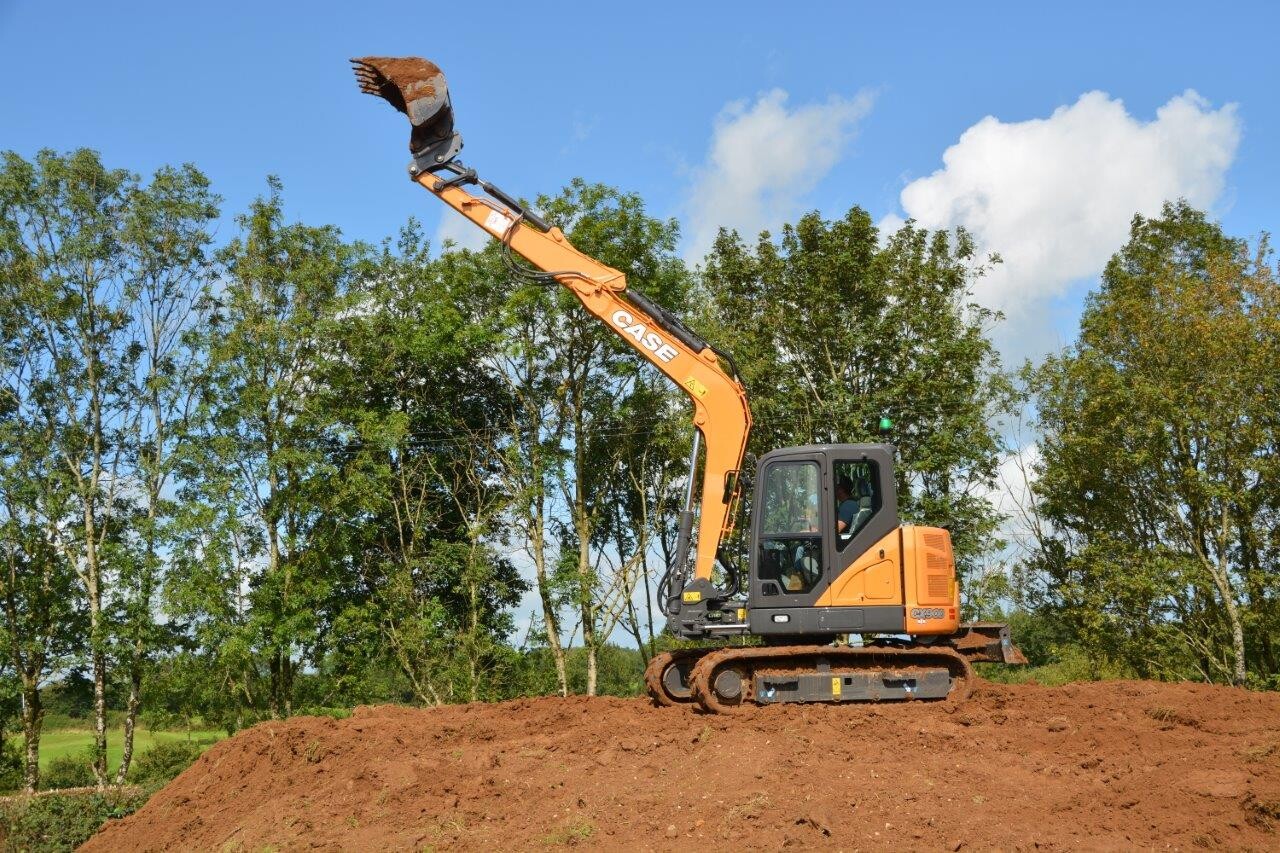
By now I had chucked a fair pile of topsoil in front of me so it was time to try out the dozing capabilities, we had had rain the night before so it was slightly wet underfoot so with the rubber tracks it was a bit on the slippery side, however with plenty of power under the bonnet, it coped very well despite a heavy load in front of it.
I’ve been fortunate enough to operate quite a few CASE CX machines over the years and I have always enjoyed the experience, they are so smooth in operation and a real pleasure to work with, this new model was no different, an exceptional piece of Japanese hydraulic excavator technology of which I enjoyed every minute on.